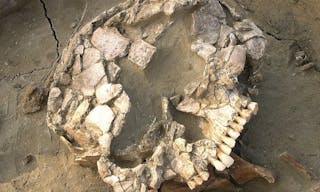What you need to know
Archaeological evidence suggests dog offered a meaty supplement to farmed produce as far back as 5,000 years ago.
To a large extent, Taiwan’s original inhabitants were able to live off the fat of the land. Because the island’s fecund environment and biodiversity provided a range of foods, the estimated 100,000 Austronesian people living here when the Dutch East India Company established its trading base at Tainan in 1624 did not need to engage in serious agriculture. Instead, they hunted and gathered.
At least some indigenous people consumed enough protein to grow big and tall. In his book “How Taiwan Became Chinese”, Tonio Andrade quotes early European visitors who were impressed by the health and strength of local folk in the southwest, where venison was a staple.
Chen Di (陳第), a Fujianese scholar who accompanied a Ming dynasty piracy-suppression expedition to Taiwan, saw Siraya aborigines eating every part of the deer they caught, including (to his revulsion) the intestines and contents thereof. They did not, however, eat chickens, finding them quite disgusting.
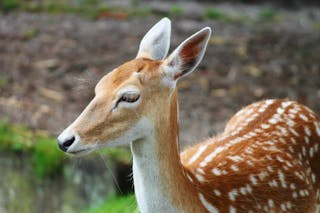
Photo Credit: Pixabay
In “Dong Fan Ji” (東番記, Notes on the Eastern Barbarians), the short account Chen authored on his return to China in 1603, he recorded that the native people did not cultivate paddy fields. Instead, they grew upland-style a strain of rice that produced longer grains than the rice he was familiar with.
Three centuries later, Japanese rice expert Eikichi Iso (磯永吉) – later revered for his role in the development of ponlai rices that still dominate local grain production – collected no fewer than 60 rice landraces from indigenous communities around the island.
Because Taiwanese Austronesians did not develop writing systems, almost everything we know about local eating habits before the era of Chen Di is the result of recent archaeological effort. Scientists who studied bone collagen taken from animal and human remains left by the neolithic Yuanshan Culture – which flourished close to where Taipei’s Grand Hotel now stands – think cultivating crops and raising pigs (which may have begun 4,200 years before the present) took a backseat to gathering food from the wild. Yuanshan-era kitchen middens suggest fishing, collecting marine and river mollusks, and hunting wild sika deer (Cervus nippon taiouanus) and boar were all important.
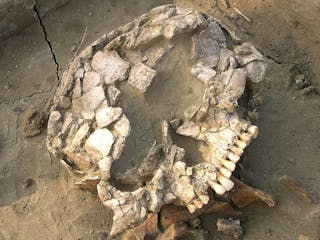
Photo Credit: Steven Crook
Digging in Tainan at the site called Nankuanli East (南關里東, NKLE) uncovered evidence that neolithic Taiwanese engaged in farming between 4,300 and 5,000 years ago. It seems two forms of domesticated millet (broomcorn and foxtail), as well as rice, were cultivated, a find the archaeologists thought was, “of great importance and significance, assuming that prehistoric people… already knew how to grow these plants, and the mode of their subsistence was no longer limited to hunting and gathering. This assumption seems to gain its support not only from direct evidence of millet grains and indirect evidence such as the types of tools used for agricultural activities at that time. The most distinguishing tools are shell knives… probably used as a kind of grain-harvesting tool.”
No evidence of a particular cooking method was found, and it is assumed millet and rice were probably boiled into a gruel or porridge. Cereals were foraged as well as cultivated, about 10 percent of the grains unearthed at NKLE being wild yellow foxtail millet.
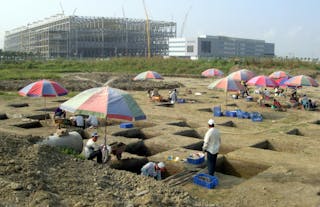
Photo Credit: Steven Crook
Neolithic and later people likely also consumed Oryza perennis formosana, an ancient rice akin to the brownbeard rice U.S. authorities regard as an invasive species. Oryza perennis formosana, common in irrigation ponds and ditches in northwest Taiwan as recently as the 1930s, was confined to a mere three locations by 1957. Seed samples were taken – just as well, as by 1977 it was gone from the wild. Scientists attribute its disappearance to hybridization with cultivated strains, human management of water, and the use of chemical fertilizers.
Native red quinoa (Chenopodium formosanum, known to modern Taiwanese aborigines as djulis, was surely part of the paleo diet. Because this pseudocereal can flourish even in arid conditions, it has greatly helped indigenous communities get through periods of drought as recently as 1918.
The people who lived at NKLE did not subsist only on grains and foraged fruits and vegetables, of course. The weight of fish bones recovered there was about double that of dog remains, yet the latter outweighed the faunal remains of deer, boar, muntjac, hares, and crabs combined. Tiny quantities of bird, bat, frog, and snake bones were also found. Cutting marks on many of the canine bones suggest dogs were raised for food as well as for hunting and guard duty.
However, dietary variety did not always mean sufficiency. Teeth in more than half of the closely-studied adult skeletons unearthed at NKLE showed signs of linear enamel hypoplasia. LEH is a result of enamel development being disrupted, very often because the mother and/or the growing child suffers the stress of malnutrition.
Researchers have reconstructed dietary patterns of between 400 and 2,000 years ago by analyzing skeletal remains recovered from the Iron Age site at Fan-Tzu-Yuan (番仔園) in Greater Taichung. The inhabitants got their protein from muntjac, goats, and badgers, as well as deer and pigs. The contribution of marine shellfish was deemed significant, 12 species of shellfish appearing in the site’s middens, alongside fish, turtles, and birds.
Rodents were eaten with relish, it seems. The bones of rats were found at Fan-Tzu-Yuan. At NKLE, by weight, rat remains exceeded those of turtles, rabbits, and felines.
In 1715, Father de Mailla (a Jesuit whose nationality has not been confirmed) noticed that field rat with a millet-wine sauce was an especial delicacy among the Puyuma indigenous people, pointing out: “They eat the flesh half-raw, and if it is even very slightly cooked, they find it excellent.” Earlier Han visitors had already observed that native Taiwanese scarcely cooked their fish and meat. In “From Far Formosa”, George L. Mackay also records some aborigines having a taste for ultra-fresh, raw meat.
By the time the Dutch arrived, deer were more than a source of food. The indigenous people were already trading with Han and Japanese merchants, bartering deer hides for cloth, iron, rice, and salt. It was not until the 1660s that seawater evaporation ponds along the southwestern coast began meeting local demand.
As in other parts of the world, salt was an essential preservative. Early visitors report seeing aborigines salt raw fish, and fish complete with their scales and viscera. For flavoring but not preservation, some made do with a creamy substance derived from the fruit of Roxburgh sumac, a small deciduous tree endemic to Taiwan that grows at low altitudes.
Taiwan’s earliest inhabitants, in addition to scouring the foreshore for shellfish and other edibles, surely sought food from rivers and creeks. The freshwater Taiwan Clam (Corbicula fluminea formosa) was previously so common that among Fujianese pioneers, the Holo-language equivalent of “kill two birds with one stone” was it kiam jī kòo, bong lâ-á kiam sé khòo, “gather clams while washing your pants [in the stream].”
Foods traditionally foraged and still often consumed include Cordia dichotoma drupes, maqaw, and tana. The first of these is sometimes called fragrant manjack; it gets its Holo name (phòa pò͘ chí, 破布子, “shabby rags”) because its leaves are often chewed to pieces by insects. The drupes – known in Mandarin and sold in supermarkets as shùzǐ (樹子) – are smaller than peanuts and yellowish-green when ripe. Archaeologists think cordia was consumed in quantity by the Siraya at least 600 years ago, together with Job’s tears, Chinese hackberries, and various beans.
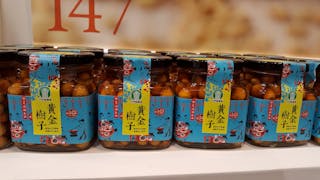
Photo Credit: Katy Hui-wen Hung
Known to Mandarin-speakers as mǎgào (馬告), maqaw is perhaps the key ingredient distinguishing the modern cuisine of Taiwan’s indigenous minority from that of the Han majority. Nowadays, few restaurants that present themselves as aboriginal do not have at least one menu item featuring this peppercorn-type seed (scientific name Litsea cubeba). As noted in the maqaw entry on the Slow Food Foundation for Biodiversity’s Ark of Taste website, they are usually dried before use in the kitchen, and sometimes crushed or ground.
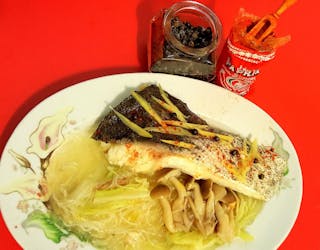
Photo Credit: Katy Hui-wen Hung
What is known to several Taiwanese Austronesian tribes as tana (Mandarin speakers call it cìcōng, 刺蔥; to Westerners it is angelica leaf or prickly ash) is Zanthoxylum ailanthoides. The young leaves of this thorny perennial are exceptionally rich in beta-carotene, vitamin E and ascorbic acid. According to the website of the World Vegetable Center, they also contain useful amounts of calcium and iron. The Amis add chopped, de-thorned tana leaves to fish and chicken soups; the Puyuma have been known to fry them with snail meat. Tana, like maqaw, can even be added to tea.
Steven Crook and Katy Hui-wen Hung are the authors of “A Culinary History of Taipei: Beyond Pork and Ponlai”, to be published by Rowman & Littlefield in October 2018.
Read Next: How American Aid and Trade Changed the Taiwanese Diet
Editor: David Green

